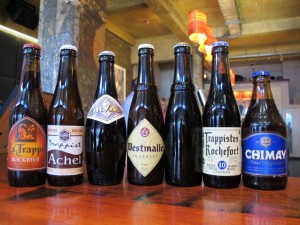
I’ve struggled for a while to come up with a similie for this. It might be the Beer Geek equivalent of an Adventure Freak climbing Everest and swimming the Channel in one weekend. Or, in Geek terms, of watching a whole season of The Wire in one sitting — with the commentary on, rather than the audio, or playing Sam & Max Hit the Road right through from memory without getting stuck. What I mean to say is: we pulled off a rather special Nerd Milestone, and it was bloody marvellous.
The big Belgian abbey ales are rightfully famous, particularly those made at the Trappist monasteries — the number of which in the brewing game has varied over the years, but currently stands at seven. And I’d venture to say that a good majority of Proper Beer Geeks haven’t had one of each in their ‘career’ — owing largely to the scarcity of Westvleteren, especially — let alone all in one night.1 It was way too much fun. The group I did this for / with had been doing occasional tastings at Malthouse for about two years and we’d mentioned the possibility of this a few times before. Finally, we got all our ducks in a row. I was almost-embarrassingly giddy with excitement and was way too distracted with hosting and tasting duties to take proper notes. Thankfully, one of the group acts as “scribe” for the choicest and weirdest comments; he’s planning on doing a blog post of his own about it, so I’ll share that when I can.
— La Trappe Bockbier
We started with La Trappe, partially since they were only relatively recently ‘let back in’ to the Authentic Trappist fraternity, after a brief falling-out over them contracting-out too much of the work. The only non-Belgian brewing monastery (being from just over the Northern border, in the Netherlands), their stuff is now pretty damn ubiquitous (they are the largest producer, though only by about 20% over Chimay and Westmalle) but we managed to find this one, a bock not normally seen on local shelves — it gets Double Bonus Uniqueness Points for being the only Trappist lager. It made for a nice start, an excellent point of comparison (since doppelbock is, broadly, the German cousin of the famous Belgian abbey ales), and a pleasant autumn sipper all on its own. To me, it just seemed like proper doppelbock; rich with a date-ish fruit flavour, and packing a strangely not-unwelcome mustiness.
— Achel ‘8’ Blond
From the biggest to the smallest producer — and the one which, in my experience, most Beer Nerds have particular trouble remembering when they try to list off the Trappists. Adding to the ease with which it slips the memory, Achel only got back into the beer-making game in 1998. The Germans had looted / salvaged their brew gear in the First World War and they never fully recovered until, in a rather-charming move, they were helped back onto their feet by Westmalle (the monastery from which their founding monks originally came) and Rochefort (a monastery founded by their own monks in turn). This was a zesty, charming blond/e (depending on your preference), somehow sweet and dry all at once. It did seem odd that a re-founded-in-the-nineties brewery would be so old-school in their packaging, though, but maybe the point was to hark right back to the early 20th Century. I did feel extra peculiar taking a photo of a blank white bottlecap — but I couldn’t not get the full set, once I’d started.
— Orval
Orval. Just “Orval”. Weirdly, for a bunch of Catholic monks, there’s no uniformity in the naming of each monastery’s different beers. There are abritrary-ish numbers, colours, and the single-double-triple ladder. Orval has no need for that, and their sole commercial2 beer screams uniqueness in other ways, too; it’s dosed-up with the usually-wild and usually-meticulously-avoided Brettanomyces yeast, something which lends flavours often described as ‘barnyardy’ or ‘saddle-ish’. If you look up the chemistry of these things, you’ll see that ‘Band-aids’ and ‘antiseptic’ are also listed among the commonly-evoked sensations — and they were very-much the lead roles in the one other bottle I’ve had of this, some time ago. Not so much that it was rendered unpleasant, but enough to make me a little anxious; nervous to have another in front of company. But damn, it was delicious. Still very different, but gorgeously sherberty and dry and zippy and delightful. A lot of that is probably down to it being conspicuously fresh, which usually means that the hoppiness is still quite forceful and the Brett-ish funk hasn’t ramped up much yet. There’s no need to necessarily fear an older bottle, though; consensus seems to be that it ages in waves — there must be some dizzyingly-complex chemistry going on, as different yeast strains play off against each others’ work over time — so the scary-chemical side comes and goes. It’s a dice roll, for sure. But a totally worthwhile one.
— Westmalle Tripel
Speaking (as I was, above) of naming systems: Westmalle’s one is strangely influential outside Trappist circles. Their original “Enkel, Dubbel, Tripel” approach named their beers according to their positions on an ascending scale of strength — the words, perhaps obviously, simply mean “single, double, triple” although “first, second, third” is probably more in the spirit, since their Tripel wasn’t necessarily three times boozier than their Enkel. Eventually, though, the second two words came to connote not just strength but also the particular character of Westmalle’s beers — their Dubbel happens to be dark, their Tripel is golden. So a ‘Tripel’ is no longer just your third-strongest beer (whoever you are); it should really be one like Westmalle’s. And speaking of that, we found it quite confrontingly gunpowdery — the flowery perfume quickly giving way to a hot taste. Perhaps owing to its relative lightness, it wore its high strength the perhaps most prominently of our set. I’m kind of sad to note this — but it must be true of one of the group, after all — but this was probably the least-well-received beer of the night. In the company it was in, that’s not the bad thing it could be, of course; is there such a thing as “praising with faint damn”?
— Westvleteren ‘12’
Maybe the anticipation and then overshadowing of this had something to do with the consensus on the Westmalle… This is far-and-away the hardest-to-get Trappist. They produce fractionally more than Achel but have charmingly-peculiar purchasing regulations in place — though the rumour of a mandated Oath to the Pope that you wouldn’t on-sell what you buy is disappointingly false; they instead just print a discreet “Do not resell” plea on your receipt. Between the brewery gate and this end of the World, the price skyrockets in a way that definitively proves demand: we bought two bottles for NZ$60 each, which was us getting a good deal with which we were delighted. But demand isn’t the point for the monks at Westvleteren. Trappist monasteries are obliged (as a matter of doctrine) to be ‘productive’ in some commercial way to support themselves and some charitable works, and one assumes that the bigger brewing operations (like Westmalle and Chimay) are rationalised on the grounds that more money equals more charity. Westvleteren don’t go in for that, brewing only enough to “be able to afford being monks”. Hell, they don’t even spring for labels, instead cramming all the legally-required text onto the bottlecap. Now that’s frugal.
Despite (and probably partially because of) their protestations and reluctance, though, their beer is legendary. Which always brings that peculiar sort of nervousness to your first encounter with it, when you’re never sure how much of the Emperor’s New Beer phenomenon might be propelling the mystique or quite how you’ll ‘come out’ as not liking it, if you don’t. But damn, I had no such worries with this. I can honestly say that it didn’t remotely disappoint; it was stunning and wonderful and everything I wanted it to be. It took me ages to take my first taste, because the aroma was just bloody lovely enough. My feeble notes list chocolate and fruit characters and a definite Weet-bix-ish / Milo-ish maltiness. Which doesn’t come close to capturing anything. Suffice to say I’d happily go in on another sixty-dollar bottle. And I earn even less money than you probably think.
— Rochefort ‘10’
And then we threw this into a massively unfair Tough Act to Follow situation, but it performed very well, bless its pretty blue bottlecap. Rochefort ‘10’ is the biggest of their three, which are all essentially rungs on a ladder of heftiness, rather than a trio of distinct varieties — in choosing their classification scheme, they’ve opted for a combination of seemingly-abritrary numbers with colour-coded caps. (My math might be off here, but I suspect that their ‘6’, ‘8’ and ‘10’ are references to ABW — alcohol by weight, rather than the more-usual alcohol by volume.) It was really delightful, and an interesting point of comparison between the previous and the next of our set. We really liked the winey, porty, sour-fruity character and while there was some malt in the aroma there wasn’t really any chocolate flavour in the taste, at least compared to the Westvleteren. My notes record us as comparing it to a bottle of Cab Sav that you left open and forgot about for days, but you liked enough / were thirsty enough that you just thought ‘fuck it; I’ll have it anyway’ — or an overloaded fruit bowl that you find on the turn after coming home from holiday. In a good way, you understand.
— Chimay ‘Bleue’
And finally, the last slot on our Dance Card went to an old friend. The Blessed Blue was certainly my first exposure to Trappist beer, and I’ve really never tired of it. Also, naturally, there’s the consideration that by this point of the evening we should probably be sticking to things more familiar than exotic if we’re to be remotely fair. Judging by the timing of the similies involving near-rotten fruit bowls with the Rochefort above, we got that about right. After six varied and powerful beers, though, this still held its own. Compared to the two which preceded it, its body was considerably lighter (reflected also in the drop in strength from 10.2% and 11.3% down to ‘just’ 9%), and the port-winey-ness milder than what you get in the Rochefort, but the spiciness came more to the front of the stage and put on a hell of a show. In the end, since we are at the end, there is a damn good reason that Chimay Blue is a classic.
1: “Dance Card” isn’t too foreign / old-timey an expression, is it? Such things really did exist — in some wonderfully weird forms — and something about the phrase just stuck in my head while planning this.
2: Like the other Trappists, Orval also make a patersbier (charmingly known as Petit Orval) for the consumption of the monks themselves. Much lighter in the booze department, these things are usually restricted to the monastery (and the obligatory adjacent tourist-distracting café / gift shop). Since I’ve finally knocked off this milestone, and since I have a longstanding Midstrength Obsession, I’m dead keen to try them. I’ll have to put a nigh-impossible Patersbier Dance Card on my To Do List.

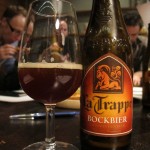
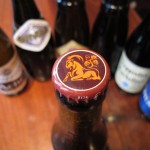
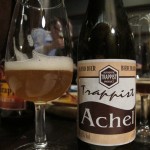
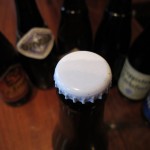
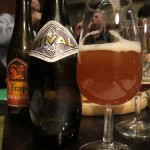
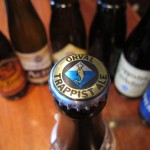
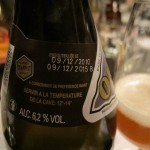
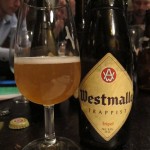
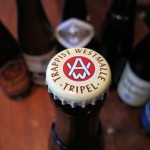
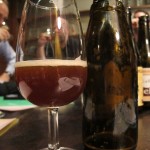
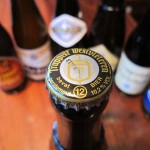
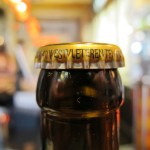
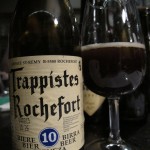
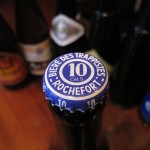
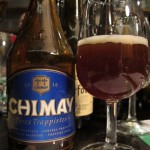
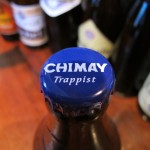
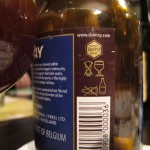
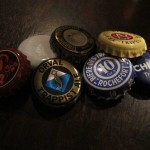
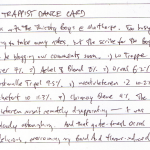
Sounds superb. Wish like anything I could have gotten an invite. Now I have something on my To Do List….
I have done all, but not in the one evening, or the same year for that matter.
It’s interesting yet confusing that in the Netherlands ‘bokbier’, thier own development of the Germanic Bock style, is not always lager fermented. According to Derek Walsh many/most are in fact ales. It’s likly that the La Trappe one is a lager though considering the big lager brewery it originates from.
I think the numbers refer to degrees plato rather than ABW.